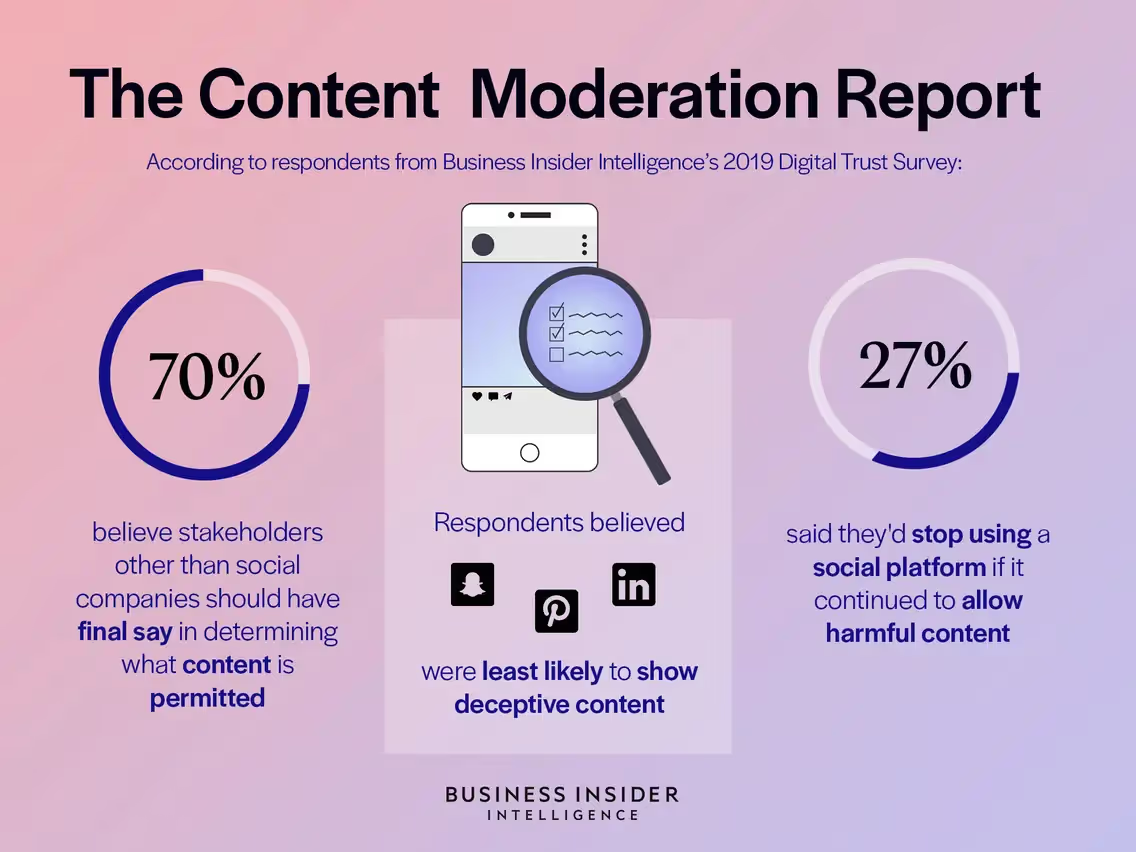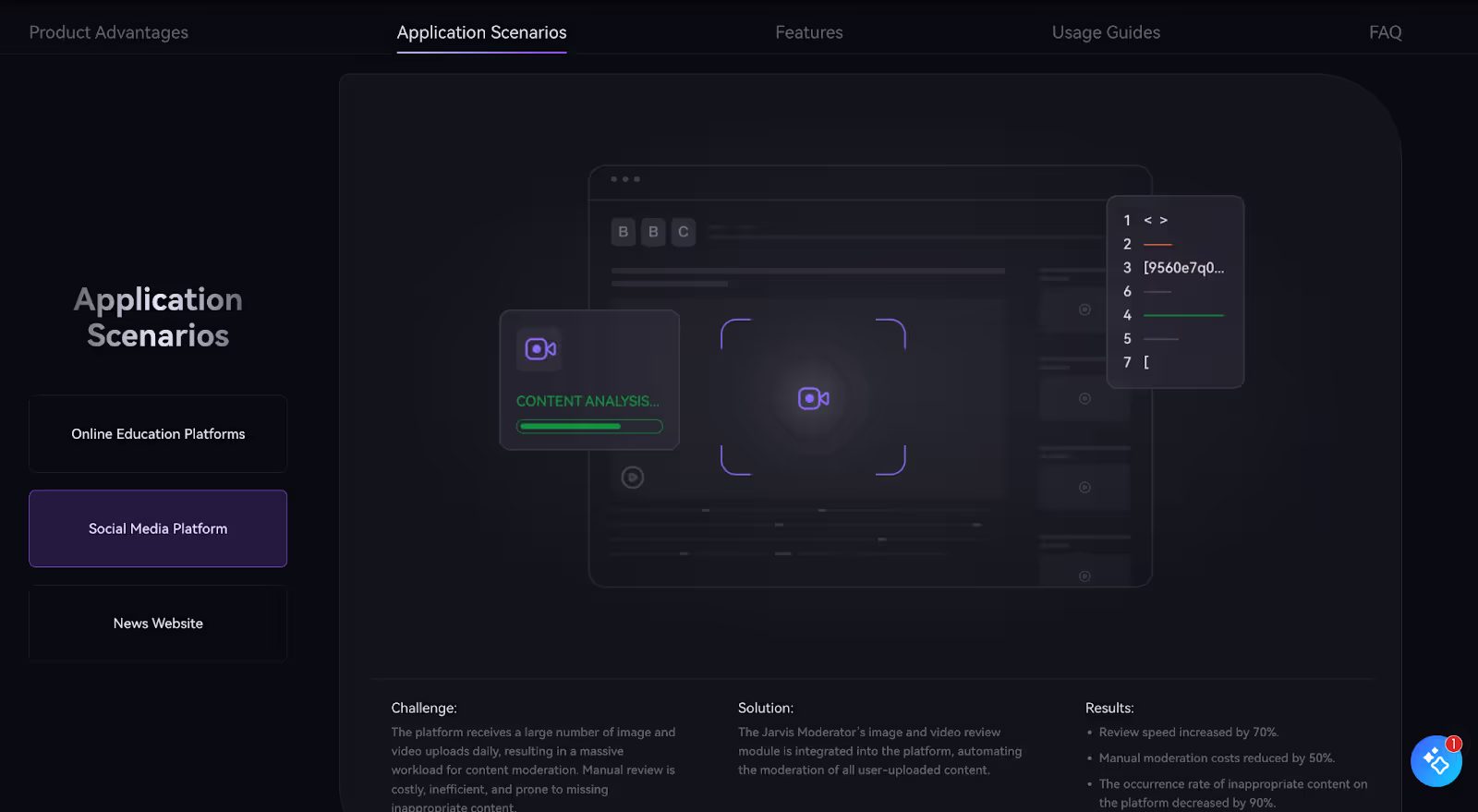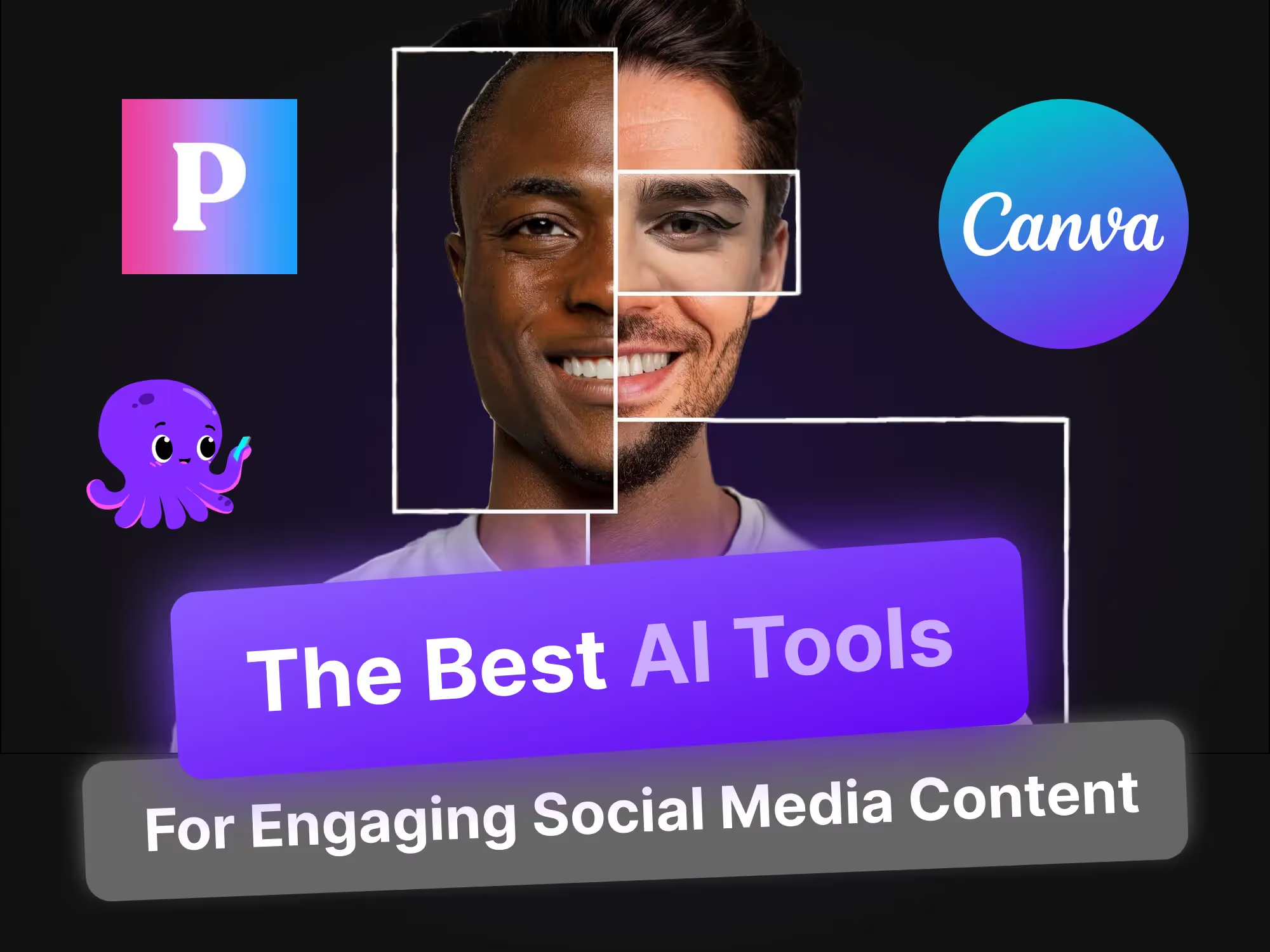Over the past two decades, the number and popularity of social media platforms have exploded exponentially. Billions of people use social media to connect with friends and relatives and to explore shared interests with users worldwide.

However, the explosive growth in social media has also caused a similar increase in the number of posts published each day. Organizations of all sizes struggled to keep up with the increase in content. In particular, social media platforms could not keep up with content moderation to ensure that posts adhered to community guidelines and the ethical use of AI.
AI content moderation is now allowing companies to maintain community standards and review millions of daily posts without an army of human moderators.
What is Content Moderation?
Content moderation is used by social media platforms, forums, and other websites to monitor what type of content is published on their domain. Companies rely on content moderation to prevent users from violating community standards and posting types of hate speech that could damage the company's brand.
Most websites have detailed community guidelines and content standards that forbid members from posting content that does not align with brand values. This includes racist, sexist, violent, threatening, misinformation, and other unwanted content.
Despite the clear value associated with content moderation, many companies have not had the resources to moderate all content. This can create a breeding ground for misinformation, hate speech, and other posts that damage the website’s reputation.
Content moderation was long seen as out-of-reach for smaller websites and those with bare-bones staff since they couldn’t keep up with the sheer volume of posts.
Why Does Content Moderation Matter?
Effective content moderation is critical. It helps companies create a safe space for all users, where customers can share their thoughts without fear of violence, intimidation, or other distressing content. In addition, this approach allows companies to remain in compliance with legal rules in the European Union and other regions where offensive content is banned and fined.

Source: https://www.businessinsider.com/content-moderation-report-2019-11
When companies monitor user content for offensive content, they’re making sure that all users have access to a safe and inclusive environment. Companies that fail to moderate content may inadvertently create an environment where some users feel unsafe or unwanted.
How Does AI Content Moderation Work?
One of the major challenges associated with content moderation is the psychological impact on human moderators. Research has found that repeated exposure to violent and bigoted content can create lasting psychological damage in human moderators. This extreme effect is just one reason why many companies have turned to AI content moderation to sift through posts.
AI content moderation removes the human element from the equation. Companies no longer have to worry about the damaging effects of repeated exposure to hate speech and violent content. Today, companies like AKOOL use machine learning algorithms and natural language processing to automatically review content against community guidelines.

It’s important to note that modern tools, like the Jarvis Moderator, can analyze text, images, and videos for inappropriate content. These tools are also highly accurate and have a low rate of false positives. As a result, major companies like Facebook, Instagram, TikTok, and others now use AI to moderate the vast majority of their platform’s content—and only rely on human moderators for complex cases or appeals.
Using AI for Content Moderation
Businesses are turning to AI content moderation in droves because it offers several benefits over human moderation. First and foremost, AI content moderation is much cheaper than building a vast network of human moderators. This cost-effectiveness makes it a no-brainer for organizations that need to maintain brand standards without breaking the bank.
It’s also much easier to rapidly scale AI when a platform surges in popularity. Human moderation is a time-consuming task that requires training and supervision. On the other hand,
AI moderators can analyze thousands of posts a minute without a significant increase in cost.
Finally, AI systems are based on machine learning algorithms that improve as time passes. These systems become more accurate, make fewer errors, and become faster the more content they moderate. They can also learn your brand’s specific guidelines for endless customization.
Key Features of AI-Powered Content Moderation
.avif)
Several AI content moderation platforms can handle basic moderation on bare-bones forums and corporate websites. However, only a handful of AI platforms are capable of moderating different types of content and high volumes. When your team begins assessing AI content moderation tools, it’s important to pay attention to these key features:
- Image and Video Moderation: Nearly every platform can moderate text effectively. Only the best tools can analyze images and videos for community guideline compliance in real time.
- Content Risk Review: AI tools are becoming more and more sophisticated. But, companies still need a handful of human moderators to handle complex cases. The best tools flag content that may violate guidelines and send ambiguous cases over to human moderators for a final review.
- Natural Language Processing (NLP): Make sure that your chosen platforms come with robust NLP, which allows AI tools to understand context—in addition to the words themselves. The tool should also be able to handle multiple languages.
- Data Privacy: Organizations should vet platforms to make sure they comply with data privacy regulations, particularly GDPR.
The Benefits of AI Content Moderation

AI content moderation brings several important benefits. These include complying with local and national regulations, protecting the platform from lawsuits, protecting the company’s reputation among users, and boosting participation by increasing consumer trust in the brand.
By using AI for content moderation, companies can also reduce costs dramatically. Human moderators are costly and have an extremely high turnover, requiring a large budget. AI moderators can also be scaled quickly and easily—making it a great option for companies that anticipate high growth in the future.
What are the Different Types of AI Content Moderation?
There are several popular types of content moderation. Your team should carefully assess each option for its advantages and disadvantages before committing to a strategy.
- Pre-Moderation: AI moderators must review and approve content before it’s ever published. This is the most restrictive approach, but guarantees that harmful content is never published on your site.
- Post-Moderation: The content is automatically published, with AI moderators reviewing the content after it’s live. This approach is less restrictive but will allow some unwanted content to be published before it’s taken down.
- Reactive Moderation: Moderators only review content once it’s flagged and reported by a human user. This places a heavy burden on the user community to serve as de facto content moderators.
- Hybrid Moderation: Uses AI moderators to review content pre- or post-publishing, with humans analyzing complex cases or appeals to ensure AI got it right.
AI Content Moderation Predictions for the Future
AI content moderation will continue to explode in popularity over the next several years as it becomes the go-to method of analyzing online content for community guideline compliance. We expect to see platforms that are capable of moderating content in more languages, are better able to understand cultural context clues and integrate more brand customization options into the platform.
Soon, AI will be able to handle tens of thousands of posts in real time without sacrificing accuracy. By 2030, most websites will use AI tools to maintain brand values and prevent hate speech from ever going live.








%20-%20Akool%20Blog%20Banner.avif)
